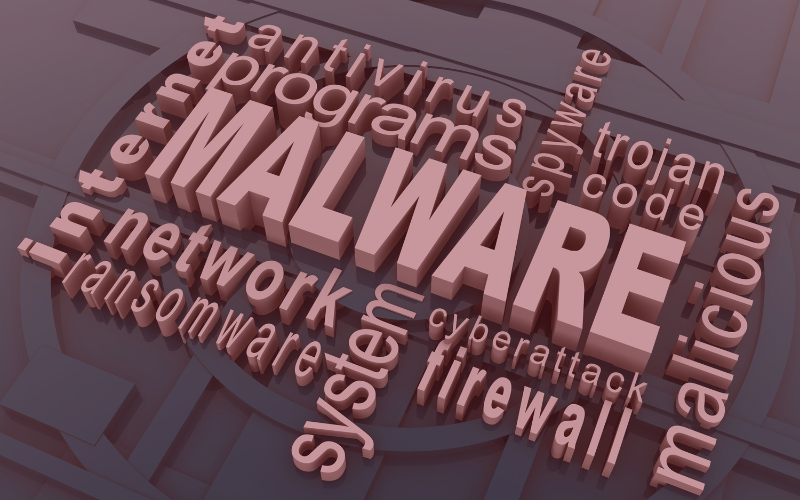The 15 most common hacking techniques
By Marc Bernaldo on Mar 21, 2024 1:00:03 PM

There are many types of cyberattacks, and as technology advances, more types emerge. However, there are some hacking techniques that are the most common and used by cybercriminals, as they are the most effective for achieving their objectives.
When we talk about hacking techniques, we refer to the methods used by cybercriminals to breach the security of a system or computer infrastructure, usually with the aim of stealing valuable information or data, putting the company in a difficult situation.
Even though they are called hacking techniques, at ESED we like to remind that hackers are actually the good guys in the movie, those computer technicians specializing in cybersecurity whose objective is to maintain the security of a system by implementing cybersecurity solutions. On the other hand, the criminals who attack a system are referred to as cybercriminals.
Next, we are going to review the 15 most common hacking techniques.
1. Phishing
Phishing is a type of cyberattack typically launched via email, although other types exist.
It works by impersonating the identity of a person or company with the aim of getting the recipient of the message to take some action, such as downloading a file or clicking on a link, to execute the malware hidden within. This way, the cybercriminal gains control over a system.
2. Keylogger
This is a hacking technique capable of capturing the keystrokes typed on our computer keyboard, in order to gather confidential information such as phone numbers, passwords, credit card numbers, etc.
3. DDoS Attacks
DDoS (Distributed Denial of Service) attacks are a type of attack aimed at disabling a server, service, or infrastructure. There are various forms of DDoS attacks:
-
By saturating the server's bandwidth to make it inaccessible.
-
By exhausting the system resources of the machine, thereby preventing it from responding to legitimate traffic.
4. Cookie theft
In a browser's cookies, all our personal data is stored, and cybercriminals take advantage of this to obtain valuable and personal information. They do this by injecting malicious code that can redirect us to dangerous pages or install, for example, fake browser extensions.
5. Fake WAP
This involves spoofing a wireless access point (WAP). It masquerades as the official WAP, allowing the attacker to access our data.
These types of cyberattacks are very common when connecting to public Wi-Fi networks. Therefore, as cybersecurity specialists, we recommend avoiding connecting to these types of networks as it can pose a security risk. In this article, we discuss the consequences of connecting to public Wi-Fi and the reasons why you shouldn't do it.
6. Troyanos
A Trojan malware is a file, program, or piece of code that appears to be legitimate and safe but is actually malware. Trojans are packaged and delivered within legitimate software (hence their name) and are often designed to spy on victims or steal data. Many Trojans also download additional malware after installation.
Its name comes from the myth of the Trojan Horse from the Iliad, as it employs the same deception used by the Spartans.
7. ClickJacking Attacks
This is a hacking technique that hides a real webpage, redirecting the user to a malicious page. This trap goes unnoticed by the user, who, believing they are still on a legitimate page, clicks or navigates without realizing that their system has just been infected.
Typically, these types of cyberattacks work on websites for downloading or streaming movies online.
8. Bait and switch
Cybercriminals purchase advertising space so that when a user clicks on one of these ads, malware is executed on the system, thereby granting the cybercriminal access to the computer system.
9. Brute force attack
This type of attack involves the use of automated programs to try different combinations of passwords until the correct one is found. Cybercriminals use cracking tools to decipher weak or predictable passwords.
10. Social engineering
Social engineering is a technique in which cybercriminals psychologically manipulate people to obtain confidential information. This technique originally started through calls and SMS, but now we also find it on social networks.
11. Cross-Site Scripting (XSS) Attacks
In this type of cyberattack, cybercriminals exploit vulnerabilities in the system to insert malicious scripts into legitimate web pages. These scripts run in the end user's browser, allowing hackers to steal confidential information such as passwords or session data.
12. Code Injection Attacks
Cybercriminals exploit vulnerabilities in web applications or databases to insert malicious code, such as SQL or JavaScript, into computer systems. This allows them to access confidential information or perform unauthorized actions on the system.
13. Malware
Malware is malicious software that installs on a system without the user's consent. Cybercriminals use different types of malware to gain access to systems and steal information or cause damage.
The most commonly used is ransomware. It is a type of malware designed to steal confidential information, encrypt it, and demand a ransom for its recovery. If the company does not agree to pay this ransom, the cybercriminal threatens to make the information public.
14. Interception attacks
Cybercriminals can intercept communication between two systems or users to obtain confidential information such as passwords or credit card data. This is often done through techniques like "man-in-the-middle," where the cybercriminal positions themselves between the sender and receiver to intercept the transmitted information.
15. Security breach detection
Security breaches in a system or computer infrastructure are the primary cause of malware infiltration. Cybercriminals specialize in detecting weak points or vulnerabilities in systems to launch cyberattacks against them and achieve their objectives.
To prevent such security breaches, it is important to monitor systems periodically to locate and address them in a timely manner. Therefore, having a cybersecurity specialist is of paramount importance.
For the automatic detection of these vulnerabilities, we recommend using Petam.io, a proprietary tool we have developed so that any company can assess the security level of its system and find an effective solution.
Ethical Hacking Techniques by ESED
At ESED, to preserve the security of computer systems, we also carry out hacking techniques, but unlike those used by cybercriminals, these are ethical hacking techniques.
The first step in protecting a system is to understand its security level and the types of threats it faces. That's why we implement our ESED Attack solution, which involves launching controlled and harmless attacks against a system to determine how it responds and if it can detect and stop them in time. This way, we assess its security level and can implement tailor-made cybersecurity solutions such as anti-phishing measures, antivirus software, firewalls, backup systems, among many others.
You May Also Like
These Related Stories

Industrial Cybersecurity: Concept and how to implement it

10 types and 10 techniques of malware used by cybercriminals







.png?width=262&height=150&name=accio-10-negre%20(1).png)

